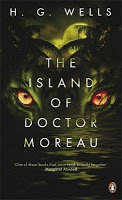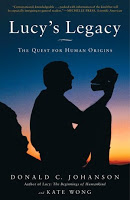Young Man on a Mission

I love getting older. Really! Part of the joy is watching all the young boys I have known with hemophilia over the past 24 years, both here and abroad, grow up. I just went out to lunch in Waltham with a friend today, which is not a town I normally visit, and who should walk into the restaurant? A mom of a boy I have known with hemophilia since he was 2. We chatted for a bit. Her son is in college now, like mine. I get a warm glow thinking of how lucky our sons are to survive despite this disorder.
Not all children with hemophilia worldwide are so lucky. And you normally don’t expect young people like our sons to think of such weighty matters; after all, they have college, jobs, video games and girls on their minds. But one young man stands apart from the crowd, and I have known him and his family for years and years. Diane, his mom, is one of our biggest sponsors for my nonprofit Save One Life. The Horbacz’s sponsor 30 children! And next week, they journey to India for the first time to meet their sponsored children.
Not only that, but Matthew, only in high school, has decided to try to help us hit 1,000 sponsored people with hemophilia through his school.
On the Save One Life website, Matthew writes: “I cannot say that I ‘suffer’ from hemophilia, but the impoverished children in developing countries truly do suffer from a condition that could be so easily improved through better medical care and access to medication. Now if one of these kids falls and hits his knee, do you know what he does? Nothing. Medication is not available, and he may not even have access to ice. Rather than giving himself an infusion, he has to wait it out and pray. For those who are lucky enough to not know what internal bleeding feels like, let me tell you that, even with proper medication, it’s NOT a pleasant experience. Your joint will become swollen, your movement is severely restricted, and it’s very painful. Now imagine if this happened to you and there was absolutely nothing that you could do about it. You knowingly had to endure the pain and suffering while kids in wealthier countries like America who “suffer” from the same exact condition are able to live completely normal lives.
“Kids in poor countries are unable to live normal lives–many do not even make it past their teenage years. Through Save One Life, for $20 per month, you can help save the life of a child with hemophilia with food, medicine, and education. After discovering Save One Life and reading about the suffering children, it inspired my family and me to sponsor a child. It started out as just one child, but over the years that number grew. Today we proudly sponsor 30 children.
“This April my parents and I are going to India to meet the children we sponsor and bring life-saving medical supplies. However, seeing children who do not yet have sponsors will be a most painful experience. How can I go empty handed to visit these kids in great need? Well, I don’t plan to. My plan is to match each kid I meet with a sponsor. Therefore, I am asking for your help. Please help me meet my goal of finding 35 sponsors before April 4th. Please consider sponsoring a child or possibly making a donation in support of my mission to India. Please help Save One Life. Together, we can make a difference. Thank you and God Bless.”
Matthew represents the future of America, and this life-changing visit will surely plant seeds that will sprout in the years to come. The power of one young man with hemophilia to change the world! It’s humbling and admirable. Visit www.SaveOneLife.net to learn more and to support Matthew’s mission.
And ask yourself: what have you done for a suffering person lately? What’s your mission in life? Find it and live it; take it from Matthew. There are many ways to directly help those who suffer, through Save One Life. Good luck, Matthew and God bless you!
Great Book I Just Read
The Island of Dr. Moreau by H.G. Wells
The gifted Wells has created an unsettling sci-fi masterpiece that impacts at many levels. Superficially, Pendrick, a British scientist, is shipwrecked on a remote island where he finds strange creatures, combinations of man and beast. Eventually he meets Dr. Moreau and his assistant Montgomery, who are conducting horrible vivisection experiments on animals. Eventually Pendrick learns they are attempting to transform animals into human beings. Pendrick watches in horror at the unfortunate outcomes, which seem a mockery of nature. The creatures are subservient to Moreau, who rules them with “Rules” and whips. With the references to hairy beasts, dark skins and intelligible speech, Wells clearly makes an indictment of the British Empire, subjugating and attempting to civilize the “lesser” people of the world in India and Asia. It also is a statement on evolution: can we evolve “down” as well as up? And finally, humanitarianism. In trying to make the beasts into men, is Moreau trying to make the animal culture/nature into something better, but also something it is not? Moreau plays God and attempts to alter genetic codes, nature and destiny. Extremely well written and very hard to put down. A literary classic. Five/five stars.






